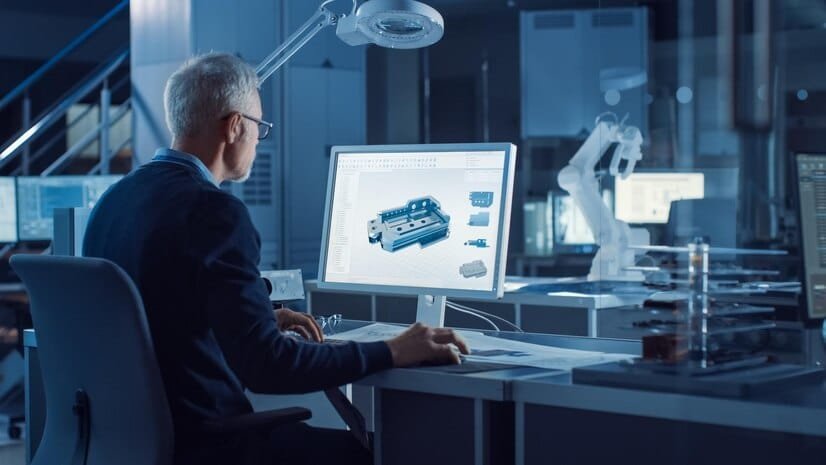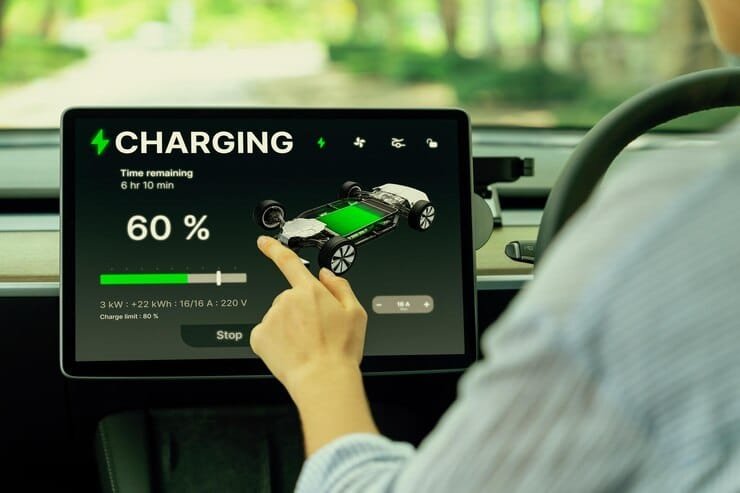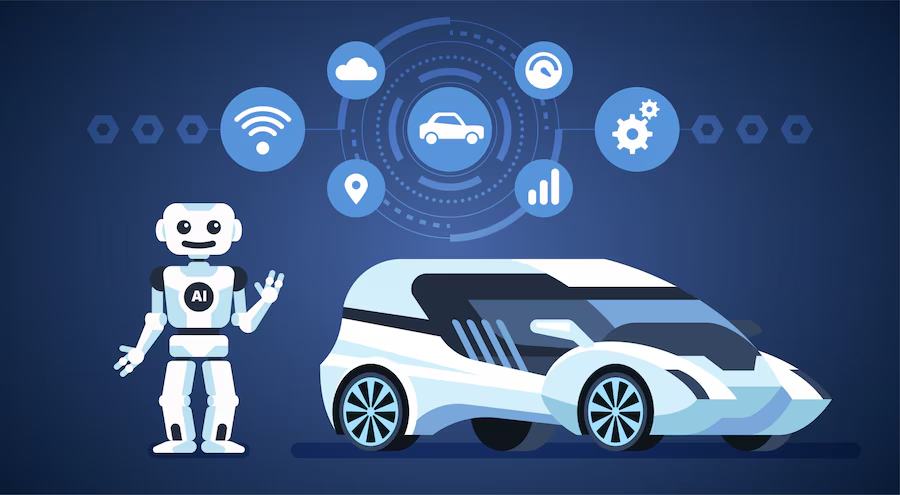The automotive industry is undergoing a radical transformation, driven by the relentless integration of software into every facet of vehicle design and operation. This shift, while promising unprecedented levels of functionality and efficiency, has simultaneously rewritten the rules of cybersecurity. No longer are we dealing with simple anti-theft systems; today’s connected cars represent complex, networked ecosystems vulnerable to sophisticated attacks targeting everything from engine control units to infotainment systems. This necessitates a paradigm shift in cybersecurity strategies, moving beyond traditional approaches focused on physical security.
The current cybersecurity software landscape within the automotive sector is a mixed bag. While significant advancements have been made in areas like intrusion detection and prevention, the sheer complexity of modern vehicle software architectures presents formidable challenges. For example, the increasing reliance on over-the-air (OTA) updates, while offering benefits in terms of functionality updates and bug fixes, also introduces new attack vectors. Similarly, the proliferation of external connectivity features, including GPS, Bluetooth, and Wi-Fi, expands the attack surface significantly. Weaknesses lie in the lack of standardized security protocols across different manufacturers and the difficulties in conducting comprehensive security testing on such intricate systems. The consequences of breaches – ranging from data theft and system malfunctions to potentially life-threatening remote control of vehicle functions – are severe.
This blog post delves into the specifics of this evolving threat landscape, examining both the strengths and vulnerabilities of current cybersecurity software solutions within the automotive industry. We’ll analyze successful and failed strategies, explore emerging technologies like AI-powered threat detection, and discuss the crucial need for collaboration between manufacturers, cybersecurity professionals, and regulatory bodies to secure the future of connected vehicles. Ultimately, a robust and proactive cybersecurity approach is no longer a luxury; it’s a critical necessity for the continued growth and safety of the automotive sector.
The cybersecurity software market is experiencing rapid evolution, driven by increasing digitalization, sophisticated cyber threats, and evolving regulatory landscapes. Analyzing this market requires discerning both positive and adverse trends to formulate effective strategies.

Positive Trends:
- Rise of AI and ML: Artificial intelligence and machine learning are revolutionizing threat detection and response. AI-powered solutions can analyze vast datasets to identify anomalies and predict attacks more effectively than traditional signature-based systems. Companies like Darktrace leverage AI to autonomously detect and respond to threats, gaining a competitive edge. This trend presents a significant opportunity for companies specializing in AI/ML-driven security solutions. Actionable Insight: Invest in R&D to integrate AI/ML capabilities into existing products or develop entirely new AI-powered security offerings.
- Expansion of Cloud Security: The increasing reliance on cloud services fuels demand for cloud security solutions, including cloud access security brokers (CASBs), cloud security posture management (CSPM), and secure access service edge (SASE) platforms. Companies like Palo Alto Networks are expanding their cloud security portfolios to capitalize on this growth. This trend offers opportunities for both established players and startups focused on cloud-native security. Actionable Insight: Develop robust cloud security solutions, focusing on integration and ease of use for seamless adoption by cloud-first organizations.
- Growing Demand for XDR: Extended Detection and Response (XDR) solutions provide unified security across endpoints, networks, and cloud environments. This trend simplifies security management and enhances threat visibility. Companies like CrowdStrike are leading the XDR market, showcasing its potential. Actionable Insight: Invest in developing or acquiring XDR capabilities to offer comprehensive security management and attract customers seeking simplified solutions.
Adverse Trends:
- Increasing Sophistication of Cyberattacks: Cyberattacks are becoming increasingly sophisticated, employing techniques like polymorphic malware, advanced persistent threats (APTs), and supply chain attacks. The NotPetya ransomware attack is a prime example of the devastating impact of sophisticated attacks. This trend necessitates continuous innovation and adaptation in security solutions. Actionable Insight: Invest heavily in research and development to stay ahead of evolving attack vectors. Develop robust incident response plans and build strong partnerships with threat intelligence providers.
- Skills Gap in Cybersecurity: A significant shortage of skilled cybersecurity professionals poses a major challenge. This lack of expertise hinders effective implementation and management of security solutions. Actionable Insight: Invest in training and development programs for employees, build strong partnerships with educational institutions, and explore automation technologies to mitigate the impact of the skills gap.
- Regulatory Complexity: The evolving regulatory landscape, including GDPR, CCPA, and other data privacy regulations, increases compliance costs and complexity for organizations. Non-compliance can lead to hefty fines and reputational damage. Actionable Insight: Develop solutions that facilitate compliance with evolving regulations, offer compliance advisory services, and stay abreast of emerging legal requirements.
Conclusion:
The cybersecurity software market is a dynamic landscape with both significant opportunities and substantial challenges. Companies that successfully navigate these trends by investing in AI/ML, cloud security, and XDR solutions while mitigating the risks posed by sophisticated attacks, skills shortages, and regulatory complexities are best positioned for sustained growth and success. Proactive adaptation and strategic investments are crucial for thriving in this competitive and ever-evolving market.
Healthcare: Hospitals use endpoint detection and response (EDR) software to monitor employee workstations for malware and unauthorized access attempts, protecting patient data regulated by HIPAA. A breach could expose sensitive medical records and incur hefty fines. Strength: Enhanced protection against ransomware and insider threats. Weakness: Requires robust training and ongoing maintenance to be effective.
Technology: A SaaS company uses cloud access security broker (CASB) tools to monitor and control employee access to cloud services like Salesforce and Google Workspace. This protects sensitive customer data and intellectual property stored in the cloud. Strength: Centralized security policy enforcement across multiple cloud platforms. Weakness: Can introduce latency and require integration with existing systems.
Automotive: An automotive manufacturer employs intrusion detection systems (IDS) on its in-vehicle networks (IVNs) to detect and respond to cyberattacks targeting connected car features. This safeguards against unauthorized remote access and manipulation of vehicle systems. Strength: Prevents attacks that could compromise vehicle safety and functionality. Weakness: The complexity of IVNs requires specialized expertise for effective implementation and maintenance.
Manufacturing: A factory uses industrial control system (ICS) cybersecurity software to monitor and secure its programmable logic controllers (PLCs) and other industrial equipment. This prevents unauthorized access and manipulation that could disrupt production and cause physical damage. Strength: Protection against sabotage and operational disruptions. Weakness: Requires understanding of specific ICS protocols and vulnerabilities.
Finance: Banks utilize multi-factor authentication (MFA) and data loss prevention (DLP) tools to secure online banking systems and protect customer financial data. Strength: Strong authentication reduces the risk of unauthorized access. Weakness: MFA can add friction to the user experience if not properly implemented.
Evaluation: Cybersecurity software is crucial across various industries, providing layers of defense against evolving threats. Strengths include improved threat detection, incident response, and data protection. Weaknesses include the need for skilled personnel, ongoing maintenance, and potential integration complexities. Successful implementation requires a comprehensive strategy that considers business-specific vulnerabilities and regulatory compliance. For automotive software specifically, focus should be on integrating security throughout the vehicle lifecycle, from design to deployment, and maintaining a robust vulnerability management program.
AI-Powered Threat Detection and Response: Since 2023, many cybersecurity firms have heavily invested in AI and machine learning to enhance threat detection capabilities. SentinelOne, for example, uses AI to analyze massive datasets of security events in real-time, identifying sophisticated attacks that would otherwise go unnoticed. This allows for faster response times and reduces the impact of breaches. Strength: significantly improves detection accuracy and speed. Weakness: Requires substantial data for training and can be vulnerable to adversarial attacks if not properly secured. Conclusion: A crucial advancement, but ongoing development and robust validation are necessary.
Extended Detection and Response (XDR): The trend towards XDR, integrating security data from various sources (endpoints, cloud, network), has accelerated. Companies like CrowdStrike are expanding their XDR offerings to cover more aspects of the automotive software supply chain, including embedded systems and IoT devices. This provides a holistic view of security posture. Strength: Offers unified visibility and streamlined incident response across diverse environments. Weakness: Complexity of integration and potential for data silos if not properly implemented. Conclusion: A promising approach for comprehensive security management, but requires careful planning and execution.
Focus on Automotive-Specific Threats: Recognizing the unique vulnerabilities of the automotive sector, several cybersecurity firms have developed specialized solutions. This includes solutions focusing on securing in-vehicle networks (CAN bus, etc.) and over-the-air (OTA) updates. Strength: Addresses industry-specific threats, providing tailored protection. Weakness: Requires deep understanding of automotive systems and standards, limiting the scope of vendors. Conclusion: A necessary niche specialization driving innovation and improved protection within the automotive sector.
Strategic Acquisitions (Inorganic Growth): Many established players are acquiring smaller, specialized cybersecurity firms to bolster their product portfolios and expand their market reach. For example, a major player might acquire a company with expertise in automotive security protocols. Strength: Rapid expansion of capabilities and market share. Weakness: Integration challenges and potential for cultural clashes within the merged entity. Conclusion: A powerful strategy for rapid growth, but careful due diligence and integration planning are essential.
Partnerships and Ecosystem Development (Organic Growth): Cybersecurity companies are forging partnerships with automotive manufacturers and component suppliers to create robust security ecosystems. This involves collaborative efforts in developing secure coding practices, vulnerability management, and incident response procedures. Strength: Fosters knowledge sharing, improves industry standards, and strengthens collective defense. Weakness: Requires significant coordination and commitment from all participating entities. Conclusion: A long-term strategy for building a more resilient and secure automotive industry.

Outlook & Summary: Cybersecurity’s Shifting Sands in Automotive Software
The automotive industry’s increasing reliance on software presents a double-edged sword. While advanced driver-assistance systems (ADAS) and autonomous driving capabilities offer unprecedented benefits, they simultaneously expand the attack surface for sophisticated cyber threats. Over the next 5-10 years, the cybersecurity software landscape within the automotive sector will undergo a radical transformation. We can expect to see a significant rise in AI-driven threat detection and response systems, moving beyond signature-based approaches to proactive anomaly detection. Furthermore, the adoption of secure coding practices and DevSecOps methodologies will become paramount, integrating security throughout the entire software development lifecycle. The automotive industry will need to prioritize secure supply chain management, scrutinizing third-party components for vulnerabilities.
However, challenges remain. The sheer complexity of modern automotive software, often involving millions of lines of code from diverse sources, presents a formidable hurdle for comprehensive security. The fragmented nature of the automotive cybersecurity ecosystem, with different manufacturers employing disparate security solutions, hinders effective collaboration and the sharing of threat intelligence. A crucial weakness lies in the slow pace of regulatory frameworks and standardization, leaving significant room for exploitation. The automotive software sector’s evolution mirrors the broader cybersecurity industry’s struggle to keep pace with increasingly sophisticated attacks. While advancements in areas like intrusion detection and blockchain-based security offer potential solutions, the industry must address the fundamental challenges of complexity, fragmentation, and regulatory gaps to ensure robust cybersecurity.
This article highlights the urgent need for a holistic approach to automotive cybersecurity, encompassing proactive threat modeling, robust vulnerability management, and a commitment to ongoing security improvements throughout the vehicle’s lifecycle. The key takeaway is that effective cybersecurity is no longer a supplementary feature but an integral component of the automotive software ecosystem, demanding a paradigm shift in development practices and regulatory frameworks. Ultimately, the success of the automotive industry in this new era hinges on its ability to address the ever-evolving cybersecurity landscape effectively. Are we adequately prepared for the inevitable onslaught of increasingly sophisticated cyberattacks targeting our increasingly interconnected vehicles?






